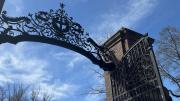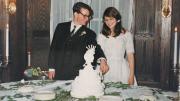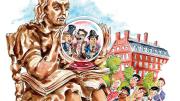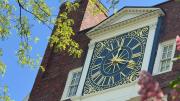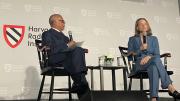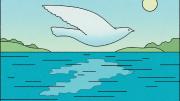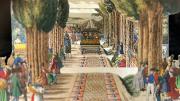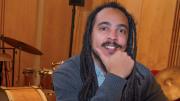During the past decade, the Faculty of Arts and Sciences (FAS) has labored mightily and at length to construct a workable general-education component for undergraduates’ course of study. At present, Gen Ed comprises eight courses intended to lift young scholars’ eyes from their fields of concentration and connect them to the civic and ethical challenges of the twenty-first-century life they will encounter Out There. As the faculty’s own review committee reported, the effort has fallen significantly short, for reasons from the profound (real differences of opinion about how best to structure such an education) to the parochial (differences in how graduate students in the sciences and in the arts and humanities are paid). Moreover, too few resources were made available when the program came into being during the financial crisis.
The emerging proposal to revivify Gen Ed triangulates visions of the current program into what might be deemed a Lite version, imposing fewer requirements on students and faculty members alike, and allowing somewhat more freedom of choice among courses. The report outlining this reform specifies the places where resources are needed to make it work, even at this reduced scale.
Meanwhile, Wintersession, held January 15-24 this year, is a sort of anti-curriculum that occupies part of the hole opened in the College calendar when schedules were synchronized across the University in the 2009-2010 academic year. Offerings range from interesting international academic immersions to campus Wintersession events proper: a wilderness first-responder course, various bootcamps, résumé writing, ice climbing, ballroom dance, Japanese sword fighting, chats with high-profile alumni, ceramics, and so on.
But one cannot help but think that the early promise of innovative intellectual and other forms of outreach and experimentation has not been realized—and that lack of resources (and the committed attention it would take to secure and apply them well) again is a factor. For many students and their families, the result is just a weird hole in the calendar after exams: too late for seasonal employment; a five-week annoyance for some; and—when Harvard’s academic year finally ends with its festival rites—an unnecessarily delayed summer break.
Harvard wants to be known for educational excellence alongside its research prowess, and for what the College dean calls a transformative student experience. Perhaps it is time for some undergraduates and teaching-focused faculty members to point out, to those on high, these obvious opportunities to do better on campus during the academic year.
~ John S. Rosenberg, Editor
